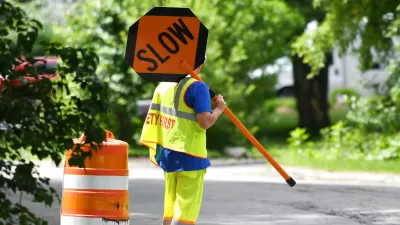Nicole Gelinas argues that five years after Hurricane Katrina, the city is on the path to becoming a bona fide urban success story thanks to its determined residents.
On the eve of Katrina, New Orleans was a distressed city by most measures, writes Gelinas, with rampant political corruption, high crime and poverty rates, pervasive unemployment, crippled infrastructure and failing public schools. Gelinas says that residents disbursed by the storm have returned to the city with a new sense of civic pride and conviction that local government can work effectively, which have been more important in rebuilding the city than federal relief funds.
Population is now 80% what it was before the storm, and local unemployment is below the national average at 7.5%. Though crime has returned to pre-Katrina levels, the city is making concrete strides to address it and other problems areas, Gelinas says.
New Orleans's citizen-driven renaissance may offer lessons for the rest of the country as it struggles to recover from the economic recession, Gelinas writes:
"New Orleans's recovering economy contrasts starkly with that of the nation as a whole, where investors remain paralyzed-shocked by the financial and economic collapse, terrified of arbitrary Washington actions, and crowded out by government activity. And in many ways besides investment, strange though it may sound, New Orleans provides a model for the rest of the country in the wake of the financial crisis."
FULL STORY: Big Easy Rising

Planetizen Federal Action Tracker
A weekly monitor of how Trump’s orders and actions are impacting planners and planning in America.

Map: Where Senate Republicans Want to Sell Your Public Lands
For public land advocates, the Senate Republicans’ proposal to sell millions of acres of public land in the West is “the biggest fight of their careers.”

Restaurant Patios Were a Pandemic Win — Why Were They so Hard to Keep?
Social distancing requirements and changes in travel patterns prompted cities to pilot new uses for street and sidewalk space. Then it got complicated.

Platform Pilsner: Vancouver Transit Agency Releases... a Beer?
TransLink will receive a portion of every sale of the four-pack.

Toronto Weighs Cheaper Transit, Parking Hikes for Major Events
Special event rates would take effect during large festivals, sports games and concerts to ‘discourage driving, manage congestion and free up space for transit.”

Berlin to Consider Car-Free Zone Larger Than Manhattan
The area bound by the 22-mile Ringbahn would still allow 12 uses of a private automobile per year per person, and several other exemptions.
Urban Design for Planners 1: Software Tools
This six-course series explores essential urban design concepts using open source software and equips planners with the tools they need to participate fully in the urban design process.
Planning for Universal Design
Learn the tools for implementing Universal Design in planning regulations.
Heyer Gruel & Associates PA
JM Goldson LLC
Custer County Colorado
City of Camden Redevelopment Agency
City of Astoria
Transportation Research & Education Center (TREC) at Portland State University
Camden Redevelopment Agency
City of Claremont
Municipality of Princeton (NJ)





























